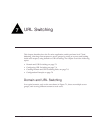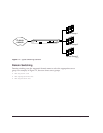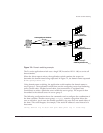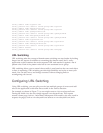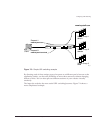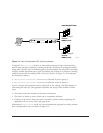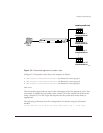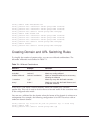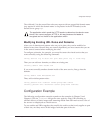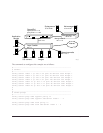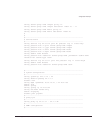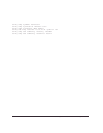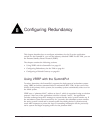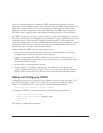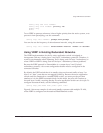
7-8 Px Series Application Switch Installation and Configuration Guide
config domain name www.ebooks.com
config pattern-rule “authorsa” server-group-name authorsa
config pattern-rule “authorsb” server-group-name authorsb
config pattern-rule “authorsc” server-group-name authorsc
config pattern-rule default server-group-name mainpage
config domain name ebooks.com
config pattern-rule “authorsa” server-group-name authorsa
config pattern-rule “authorsb” server-group-name authorsb
config pattern-rule “authorsc” server-group-name authorsc
config pattern-rule default server-group-name mainpage
config domain default
config pattern-rule default server-group-name mainpage
Creating Domain and URL Switching Rules
To simplify the creation of pattern rules, you can use wildcard combinations. The
allowable wildcards are described in Table 7-1.
Every layer 7 rule needs a default domain, which can contain only a default
pattern-rule. This rule is used to decide where to forward traffic in the event that none
of the configured rules match.
You can use a wildcard for the domain when the format of the domain is unknown or
unimportant. For example, the following configuration is for HTTP services with an
unknown domain format:
config service vip 10.65.101.20 port 80 protocol tcp l7 class http
config domain name *
config pattern-rule default server-group-name sg2
Table 7-1: Wildcard Combinations
Wildcard Example Definition
/exact-match/ /authors/ Match the entry exactly.
/end-wild/* /authors/*/ Match any ending wildcard.
/middle/*/wildcard/ /authors/*/cookbooks/ Match an imbedded wildcard, but exact entry
following the wildcard.
/*.extension /*.gif/ Match any entry with the listed extension.
/entry.* /index.*/ Match any entry with the listed filename and
a wildcard extension.




